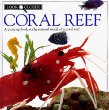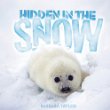-
-
-- One hundred things you should know about snakesc2011., Pre-adolescent, Mason Crest Publishers Call No: 597.96 TAY Availability:1 of 1 At Location(s) Series Title: 100 things you should know aboutSummary Note: Collects one hundred facts about snakes, describing different species and their physical characteristics, the abilities of snakes, their diets, and other related topics. Includes illustrations, cartoons, quizzes, and activities.
-
-
c2005., Barnes & Noble Publishing Inc. Call No: 595.7 TAY Availability:1 of 1 At Location(s) Summary Note: Amazing facts and information along with color images and diagrams give a clear guide to the insect world.
-
-
2004., Juvenile, Kingfisher Call No: 590 TAYLOR Availability:1 of 1 At Location(s) Series Title: Kingfisher knowledgeSummary Note: This book provides information on the largest animals of land, air, and sea.
-
-
2004., Kingfisher Call No: 590 TAY Availability:1 of 1 At Location(s) Series Title: Kingfisher knowledgeSummary Note: Provides information on the largest animals of land, air, and sea.
-
-
2004., Kingfisher Call No: 599.88 TAY Availability:1 of 1 At Location(s) Series Title: Kingfisher young knowledgeSummary Note: Explains the difference between apes and monkeys, describes their movements, diets, babies, social behavior, and threats to survival, and includes step-by-step instructions for three craft projects.
-
-
-- Antarctic2000., Dorling Kindersley Call No: 577.5 TAY Availability:1 of 1 At Location(s)View cover image provided by Mackin Series Title: Eyewitness books Volume: 57Summary Note: Describes the polar regions and the flora and fauna that survive in these hostile conditions.
-
-
-- Arctic and Antarcticc2000., Juvenile, Dorling Kindersley Call No: 508.311 Tay Availability:1 of 1 At Location(s) Series Title: Eyewitness booksSummary Note: Illustrations and text explore the frozen landscapes of the polar regions, and provide information about the flora and fauna that survive in the hostile conditions.
-
-
1994., Sterling Call No: 912 TAYLOR Availability:1 of 1 At Location(s) Summary Note: Provides information and activities for understanding all kinds of maps and learning how they are made.
-
-
c2006., Juvenile, Lorenz Books ; Distributed by National Book Network Call No: 595.7 Availability:1 of 1 At Location(s)View cover image provided by Mackin Summary Note: Contains over 800 full-color photographs and illustrations of the habitats, life cycles, and survival tactics of a wide variety of beetles, bugs, butterflies, moths, insects, and spiders.
-
-
c1993., Dorling Kindersley Call No: 598.29 Edition: 1st American ed. Availability:1 of 1 At Location(s) Summary Note: Describes the physical characteristics and habitats of birds around the world.
-
-
c1993., Juvenile, Dorling Kindersley Call No: 598.29 Edition: 1st American ed. Availability:1 of 1 At Location(s) Summary Note: Describes the physical characteristics and habitats of birds around the world.
-
-
c2004., Juvenile, DK Pub. Call No: 598 Edition: 2nd American ed. Availability:1 of 1 At Location(s)Table of contents Series Title: Dk pocketsSummary Note: An introduction to birds from many different habitats.
-
-
2003., Juvenile, Chrysalis Education Call No: 595.7 Availability:1 of 1 At Location(s) Series Title: Bug zone.Summary Note: This book describes bugs with running, jumping, swimming, and flying abilities, giving examples of cockroaches, spiders, centipedes, grasshoppers, fleas, dung beetles, leafcutter ants, dragonflies, and monarch butterflies.
-
-
2003., Juvenile, Chrysalis Education Call No: 595.7 Availability:1 of 1 At Location(s) Series Title: Bug zone.Summary Note: This book describes the various ways that bugs hunt, giving examples of hunting by tiger beetles, dragonflies, diving beetles, mantises, spiders, and army ants.
-
-
2003., Juvenile, Chrysalis Education Call No: 595.7 Availability:1 of 1 At Location(s) Series Title: Bug zone.Summary Note: This book describes bug builders, such as wasps, honeybees, termites, ants, spiders, and mole crickets.
-
-
1992., Dorling Kindersley Call No: 591.9 BUR Availability:1 of 1 At Location(s)View cover image provided by Mackin Series Title: Look closerSummary Note: Examines the variety of life found on coral reefs, including the seahorse, hermit crab, and sea slug.
-
-
2000 (c1999.), Scholastic, Inc. Call No: 525 Tay (Pbk) Availability:1 of 1 At Location(s) Series Title: Picture referenceSummary Note: Describes the physical features of planet Earth and the forces--such as earthquakes, volcanoes, polar lands, deserts and erosion.
-
-
2003., Raintree Steck-Vaughn Call No: 599.784 Tay Availability:1 of 1 At Location(s) Series Title: PredatorsSummary Note: Describes grizzly bears, their habits, where they live, how they defend themselves, and how they appear in human mythology and folklore.
-
-
2011., QEB Pub. Call No: [E] Availability:1 of 1 At Location(s) Summary Note: Describes how Arctic and Antarctic animals use camouflage to help them adapt to their habitats and hide from predators.



















